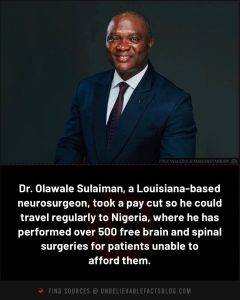The way we connect, communicate, and engage with the world has changed as a result of social media. The algorithms that run social media sites like Facebook, Twitter, Instagram, and YouTube have a big impact on what we see and, in turn, how we think since these platforms are so important in forming public discourse. Thought-provoking questions are raised about the extent to which these algorithms influence our opinions and whether or not we are aware of their influence. These algorithms are meant to personalize content by showing users what is most likely to engage them.
Every major social media platform has an algorithm at its core, which is a sophisticated set of rules and computations that decides what content shows up in your feeds, but this raises important questions: To what extent do these algorithms shape our opinions, and are we aware of their impact?
These algorithms are not random; they are designed to prioritize content based on user behavior, engagement levels, and preferences. Platforms collect data on what we “like,” “share,” or “comment” on, and use this to curate a personalized experience.
Algorithms are optimized for engagement. The more time users spend on the platform, the more advertising revenue the platform generates. This creates an incentive for algorithms to push content that keeps users hooked—often content that evokes strong emotional responses, whether positive or negative.
Filter Bubbles and Echo Chambers
One significant consequence of these algorithms is the creation of “filter bubbles.” As users are continuously exposed to content that aligns with their previous preferences, their worldview can become narrower. The algorithm filters out opposing viewpoints, leading users into an “echo chamber” where they predominantly hear opinions similar to their own. This can reinforce biases and prevent exposure to diverse perspectives, further polarizing public opinion on social, political, and cultural issues.
Social media algorithms are often criticized for their role in spreading misinformation. False or misleading content tends to generate high levels of engagement, as it often taps into emotional reactions like fear, anger, or surprise. Algorithms, in their pursuit of engagement, may prioritize this type of content, amplifying its reach. This can distort public opinion by making misleading narratives more visible than factual information.
A notorious example of this phenomenon is the role social media played in spreading misinformation during significant political events, such as the 2016 U.S. Presidential Election and the COVID-19 pandemic. The spread of fake news during these events was accelerated by algorithms that promoted viral content, regardless of its veracity.
The Psychological Impact
Algorithms also shape public opinion through their impact on individual psychology. By repeatedly showing users content that aligns with their preferences, algorithms create a cycle of validation and affirmation. This constant reinforcement can make individuals more confident in their opinions, even if those opinions are based on incomplete or biased information.
Moreover, studies have shown that repeated exposure to certain types of content can influence users’ mood and self-perception. For example, seeing an idealized version of life on Instagram can lead to feelings of inadequacy or anxiety. Similarly, being bombarded with political content that aligns with a specific viewpoint can create the illusion that this opinion is universally held, even if it is not.
While the influence of social media algorithms on public opinion is undeniable, there are ways to mitigate their impact. One approach is to increase algorithmic transparency. If platforms made it clearer how their algorithms work and allowed users to adjust the types of content they see, it could help users break out of filter bubbles.
Another solution is media literacy. Educating users about the influence of algorithms can empower them to take control of their media consumption. Being aware of how content is curated can encourage critical thinking and help individuals seek out diverse perspectives.
In conclusion, the influence of social media algorithms on public opinion is both profound and complex. While they provide a personalized experience, they also have the potential to reinforce biases, amplify misinformation, and create echo chambers. As our society becomes increasingly dependent on these platforms for news and information, understanding and addressing the influence of these algorithms is critical to fostering a more informed and open-minded public.
Ultimately, the power to shape public opinion should not rest solely in the hands of algorithms. Instead, individuals must remain vigilant, question the content they consume, and seek out diverse viewpoints to ensure they form balanced and well-rounded opinions.













